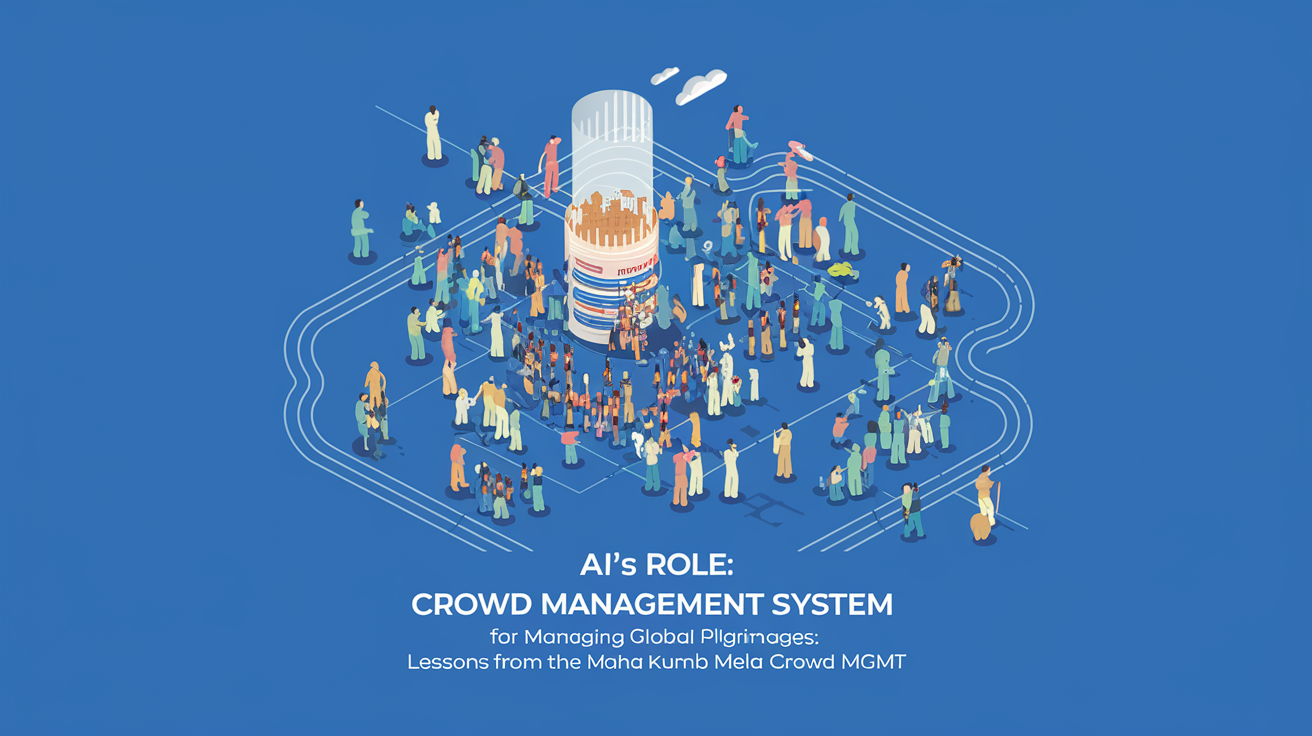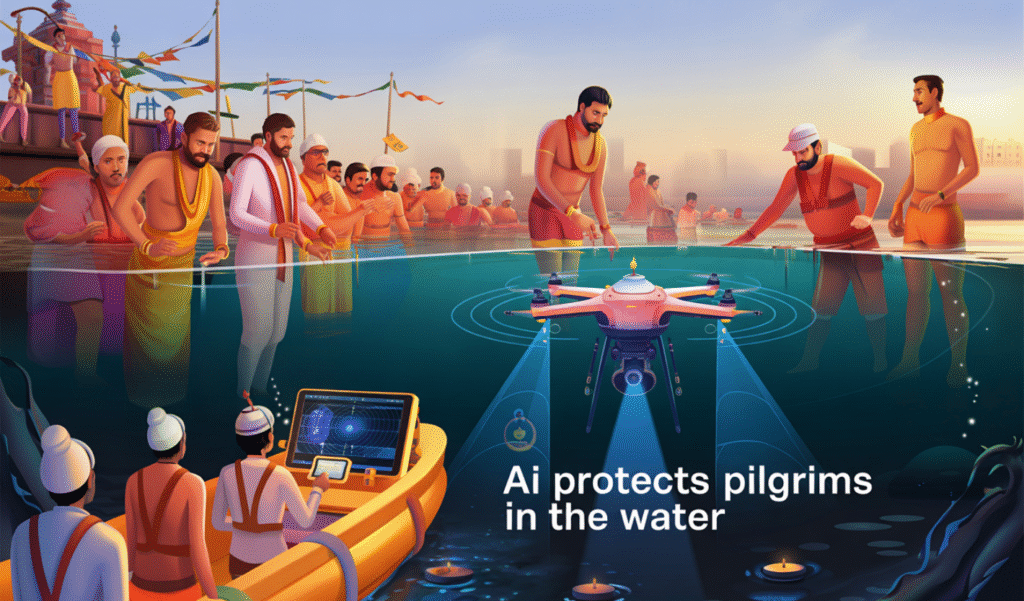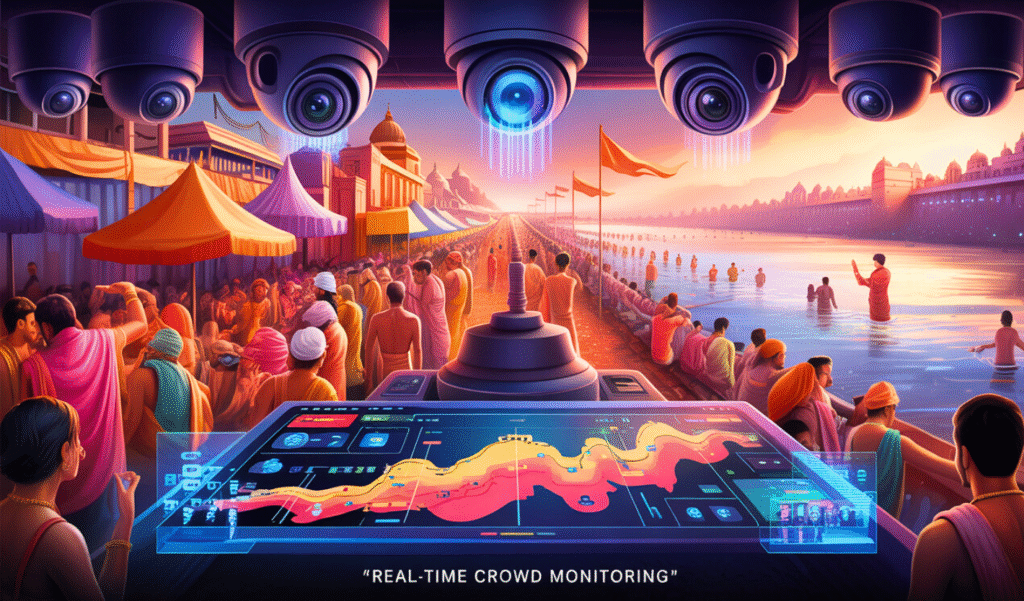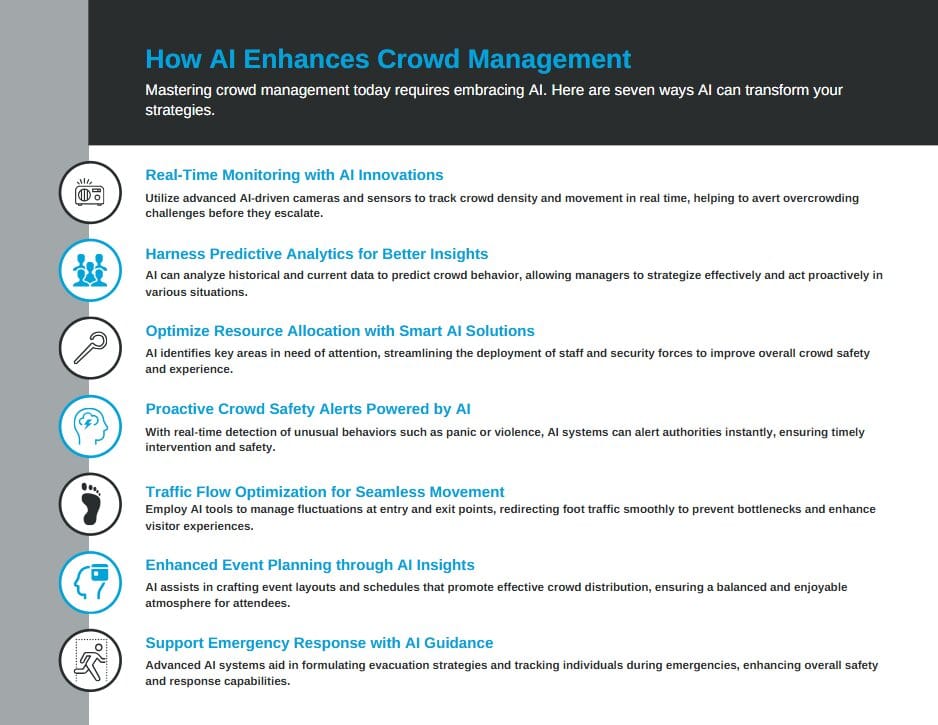

Are you ready to disrupt with AI? Join our Hackathon today! Click to Register
By WebOsmotic Team | Published on January 27, 2025
Summarize Article

Table of Contents
ToggleThe Maha Kumbh Mela, held every 12 years in India, is renowned as the world’s largest religious gathering, attracting millions of devotees to the confluence of the Ganges, Yamuna, and the mythical Saraswati rivers in Prayagraj. In 2025, the event is expected to draw an unprecedented 400 million participants over six weeks. Managing such a colossal crowd presents significant challenges, including the risk of stampedes, lost individuals, and logistical hurdles. To address these issues, authorities are increasingly turning to Artificial Intelligence (AI) to enhance crowd management systems and ensure the safety of pilgrims.
In recent years, AI has emerged as a pivotal tool in managing large-scale events. Its ability to process vast amounts of data in real-time allows for proactive decision-making and efficient resource allocation. At the 2025 Maha Kumbh Mela, AI is being utilized in several innovative ways:
Over 2,700 CCTV cameras have been installed across the festival grounds, equipped with AI-based facial recognition technology. These cameras monitor crowd density, identify potential bottlenecks, and alert authorities to unusual activities, thereby preventing stampedes and other safety incidents.

To ensure the safety of pilgrims during ritual baths, underwater drones are deployed to monitor river depths. These drones provide real-time alerts in case of accidents or drownings, enabling swift response from rescue teams.
Given the diverse linguistic backgrounds of attendees, multilingual chatbots integrated into the Kumbh app offer guidance and assistance, helping pilgrims navigate the vast festival area and access essential services.
These AI-driven crowd management solutions have set a benchmark for managing large-scale gatherings efficiently and safely.

The successful integration of AI at the Maha-Kumbh Mela offers valuable insights for managing other large-scale religious gatherings worldwide:
Real-Time Data Analysis: AI systems can analyze data from various sources instantaneously, providing authorities with actionable insights to manage crowds effectively.
Predictive Modeling: By analyzing historical data and current trends, AI can predict crowd movements and potential risk areas, allowing for preemptive measures.
Resource Optimization: AI aids in the efficient deployment of resources, such as security personnel and medical teams, ensuring they are available where needed most.
Enhanced Communication: AI-powered chatbots and information systems facilitate effective communication with attendees, providing real-time updates and assistance.
These advancements highlight how AI-powered crowd management software can transform the way large gatherings are organized and supervised.
Beyond the Maha Kumbh Mela, AI has been employed in other significant religious events:
Hajj Pilgrimage in Saudi Arabia: Saudi authorities have developed AI algorithms to manage crowds at the holy sites in Mecca and Medina. These systems assist in streamlining services for pilgrims and ensuring their safety during the rituals.
Umrah Pilgrimage: AI technologies, including predictive analytics and real-time monitoring, have been utilized to enhance crowd control and improve the overall experience for pilgrims.
AI-driven crowd management solutions are proving essential for ensuring safety and efficiency at these globally significant events.
While AI offers numerous benefits, its implementation in crowd management systems must be approached with caution:
Privacy Concerns: The use of facial recognition and surveillance technologies raises issues related to individual privacy. It is essential to establish clear guidelines on data usage and ensure compliance with privacy laws.
Ethical Implications: Deploying AI in religious settings requires sensitivity to cultural and ethical considerations. Engaging with community leaders and stakeholders is crucial to ensure acceptance and trust.
Technical Limitations: AI systems depend on the quality and reliability of data. Inaccurate data can lead to erroneous predictions and decisions, potentially compromising safety.
Infrastructure Requirements: Implementing AI solutions necessitates robust infrastructure, including reliable internet connectivity and power supply, which may be challenging in certain locations.

AI is here to take crowd management capabilities to the next level. Future technologies such as 5G, IoT (Internet of Things), and machine learning enable:
The Maha Kumbh Mela is an example of how AI crowd management systems can tackle the intricacy of international pilgrimages. Right from real-time monitoring to predictive analytics, AI presents new-age solutions that ensure enhanced safety, streamlined operations, and attendee experiences. The role of AI in crowd management solutions will grow with advancements in technology and create new standards for managing mass events around the globe. Whether it is a religious congregation or a global sports event, the future of crowd management is undoubtedly linked with AI.
AI facilitates crowd management by real-time monitoring, predictive analytics, and optimal resource allocation for ensuring safety and efficiency.
Crowd management software provides real-time insights, alerts, and recommendations, ensuring smooth operations during high-density events like pilgrimages.
While the initial implementation costs may be high, the long-term benefits in terms of safety, efficiency, and user satisfaction outweigh the expenses.
Unlock exclusive insights and expert knowledge delivered straight to your inbox